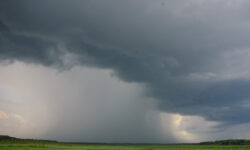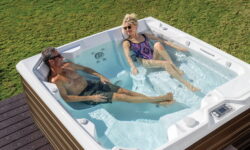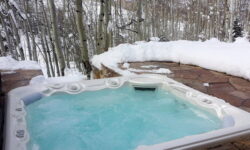You’re lounging in your hot tub, the power goes out, and you’re left wondering, “How long will this stay warm?” Don’t fret! Your hot tub’s insulation, initial water temperature, weather conditions, and cover all play vital roles in heat retention.
A hot tub will typically stay warm without power for a few hours. The exact time depends on various factors such as the initial water temperature, the quality of the hot tub cover, the outdoor temperature, and the insulation of the hot tub itself. Therefore, the hot tub could lose its warmth within 1-3 hours in chilly conditions, but it could last up to 5-7 hours in warmer climates.
We’ll guide you through these factors and give practical tips to keep your tub toasty, even without power. Let’s dive in, shall we?
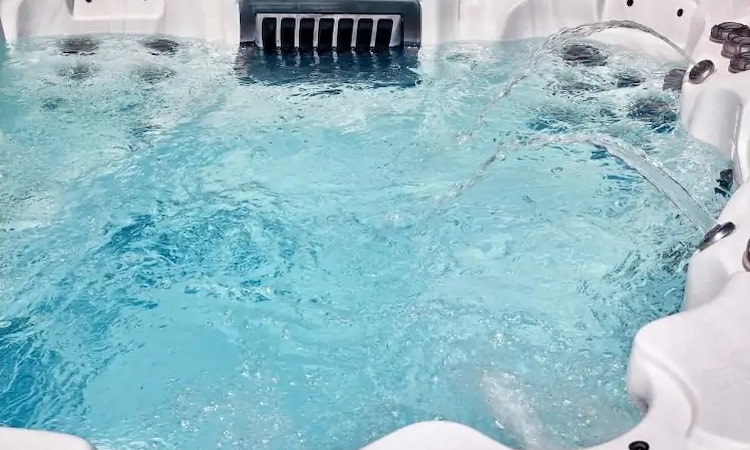
Quick Navigation
Understanding Basic Hot Tub Insulation
Before you can gauge how long your hot tub will stay warm without power, you’ve got to understand the basics of hot tub insulation. Insulation is what keeps the heat in and the cold out. It’s essentially what makes the difference between your hot tub being a steamy paradise or a chilly disappointment.
There are different types of insulation used in hot tubs: full foam and partial foam. Full foam insulation, as the name suggests, involves filling the entire cavity between the shell and cabinet with high-density foam. This type of insulation offers the best heat retention, but it can make accessing the plumbing for repairs quite difficult.
Partial foam insulation involves spraying foam around the shell and leaving the rest of the cavity empty. This provides less heat retention but makes for easier access to the plumbing.
You’ve also got to consider the cover. A good quality, well-fitted cover can significantly reduce heat loss, particularly when the tub isn’t in use.
The type of insulation and the quality of the cover are key factors in determining how long your hot tub will stay warm without power.
The Role of Initial Water Temperature
You’ll find that the initial water temperature plays a crucial role in the longevity of your hot tub’s warmth, directly affecting its thermal preservation. Starting with a higher temperature will naturally grant more heat reserves, extending the duration of warmth in case of power loss. Therefore, it’s recommended that you heat your tub to the maximum safe temperature before unplugging it.
On the other hand, there are certain considerations to factor in:
Heat Loss
- Evaporation: Hot water evaporates faster than cold water, leading to faster heat loss. A good cover can minimize this.
- Radiation: Higher temperature differences between the water and the surrounding air boosts heat loss via radiation. Insulation can mitigate this issue.
Safety
- Scalding: Overly hot water can cause burns. Ensure the water isn’t dangerously hot before entering.
- Overheating: Prolonged exposure to hot water can lead to overheating. Monitor your time in the tub.
Understanding the balance between these factors will help you optimize your hot tub’s heat retention, ensuring you can enjoy a warm soak even during an unexpected power outage.
Impact of Outdoor Weather Conditions
In your hot tub’s heat retention journey, no fewer than three major external weather conditions will have a significant impact: air temperature, wind speed, and humidity levels.
The ambient air temperature plays a crucial role. If it’s colder outside than the water in your tub, heat will naturally escape faster. Wind speed also affects heat loss – the quicker the air moves over the water surface, the more heat it whisks away.
Lastly, humidity levels can influence heat retention. Low humidity allows for faster evaporation, which cools your tub down.
| Weather Condition | Impact on Heat Retention |
|---|---|
| Air Temperature | Colder air causes faster heat loss |
| Wind Speed | Faster wind speeds increase heat loss |
| Humidity Levels | Lower humidity accelerates cooling due to evaporation |
The effect of these factors isn’t linear, though. They interact in complex ways that can dramatically affect how long your hot tub stays warm.
For example, a gusty night with low humidity and freezing temperatures will chill your tub more quickly than a still, humid evening at the same temperature. Therefore, it’s crucial to consider these variables when planning your hot tub usage.
The Role of a Hot Tub Cover in Heat Retention
Don’t underestimate the role your hot tub cover plays in retaining heat, as it’s one of the most effective tools for keeping your water warm. When the power’s out, this cover becomes an even more critical asset.
Your hot tub cover functions by minimizing heat loss in two main ways:
1. Insulation
The cover’s core material has insulative properties that help trap heat inside the tub, reducing the rate at which it escapes into the cool air. The thicker the cover, the more insulation it offers. But remember, a thicker cover may be heavier and harder to handle.
Look for covers with a higher R-value. This measures resistance to heat flow; the higher the value, the better the insulation.
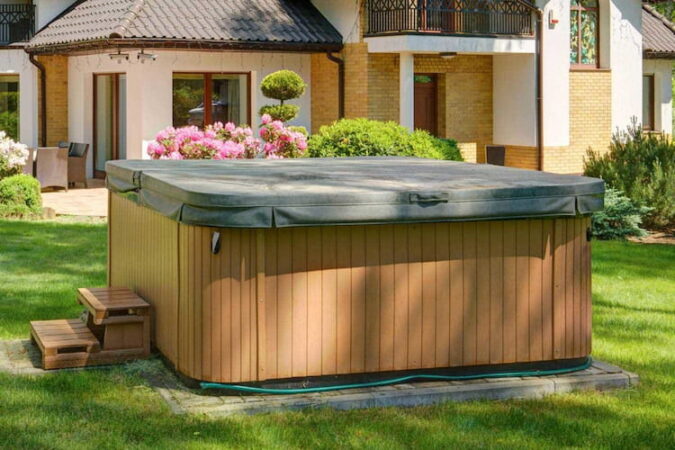
2. Evaporation control
Covers prevent water from evaporating, which is a process that significantly cools the water. A tight-fitting cover is ideal as it seals the surface of the water, preventing evaporation.
Ensure no gaps are present between the cover and the tub’s edges where steam could escape.
Practical Tips to Maximize Warmth in a Hot Tub
Let’s dive into some practical tips that’ll help maximize the warmth in your hot tub, starting with the use of a thermal blanket. A thermal blanket, placed directly on the water surface, reduces evaporation and heat loss. It’s a cost-effective method to keep your hot tub warm.
Next, consider using a high-quality, insulated cover when the hot tub isn’t in use. It’s an excellent barrier against the cold, particularly in chilly weather.
Don’t underestimate the power of the windbreak. A strategically placed windbreak, such as a fence or a row of bushes, can protect your hot tub from wind, which accelerates heat loss.
Related Read: Do You Need a Fence Around a Hot Tub?
Now, let’s look at a summary table of these tips:
| Maximizing Warmth Tips | Why it’s Useful |
|---|---|
| Use a Thermal Blanket | Reduces evaporation and heat loss |
| Use an Insulated Cover | Acts as a barrier against the cold |
| Install a Windbreak | Protects from wind that accelerates heat loss |
Lastly, regular maintenance is key. Ensure the heater, pumps, and insulation are in top-notch condition. Following these tips, you’ll enjoy a warm hot tub even when the power’s out.
Related Read: How Long Can You Leave a Hot Tub Unattended?
Frequently Asked Questions
Typically, it’ll take you about 4 to 6 hours to heat up a hot tub from cold. Factors like the tub’s volume, initial water temperature, and heater strength can significantly affect this duration.
Yes, you can use alternative methods to keep a hot tub warm without electricity. Insulation and solar covers help retain heat. Also, propane or gas heaters can heat the water if you’re off the grid.
You should never use open flames near a hot tub. Also, don’t overload it with people. Clean it regularly to avoid bacterial growth and always monitor the water temperature to prevent hypothermia or burns.
Yes, the size and shape of your hot tub do impact its heat retention. Larger tubs lose heat quickly due to increased surface area. Rounded tubs retain heat better than square ones due to their efficient shape.
The material of your hot tub greatly influences its heat retention. Insulated materials like acrylic and fiberglass retain heat longer than cheap plastics. So, your tub’s material can affect your hot tub’s energy efficiency.
Conclusion
In conclusion, your hot tub’s warmth without power hinges on its insulation, initial water temperature, weather conditions, and use of a cover. Maximizing these factors can keep your tub warm for several hours.
However, without power, the heat will inevitably dissipate. It’s essential to have a backup plan, such as a generator, to ensure your hot tub’s warmth during power outages. Remember, maintaining your hot tub’s warmth efficiently requires careful planning and smart practices.

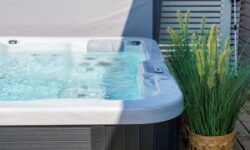
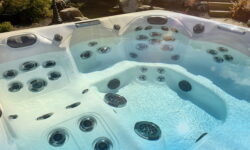
![How Much Electricity Does a Hot Tub Use? [Per Day, Week, Month] how much electricity does hot tub use](https://hottubtales.com/wp-content/uploads/2023/03/how-much-electricity-does-hot-tub-use.jpg)
